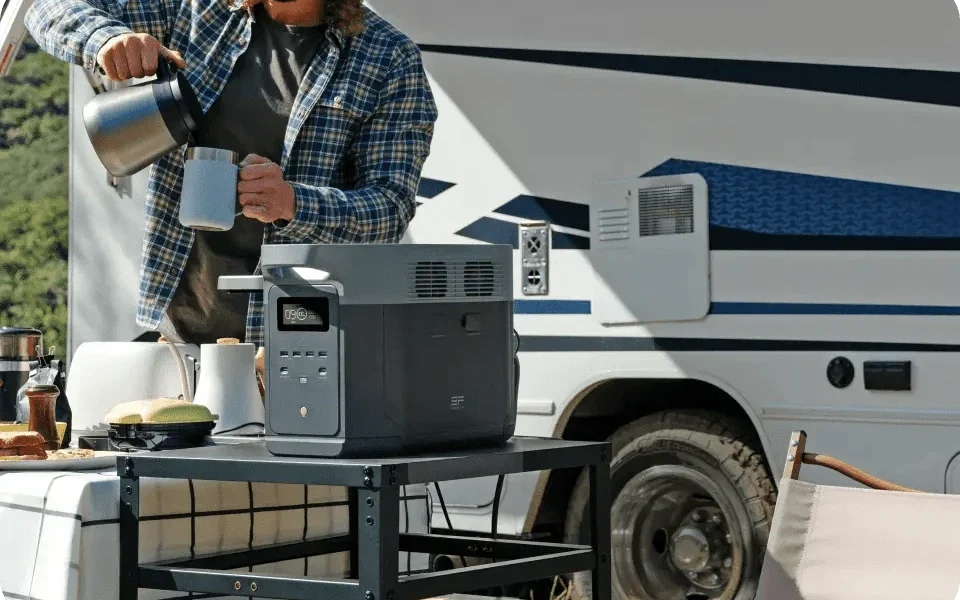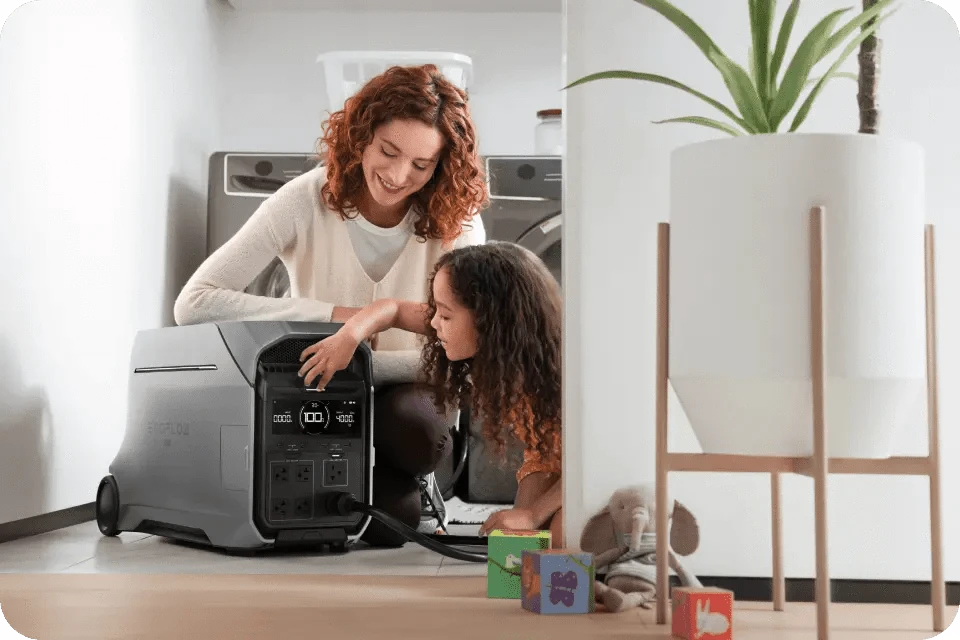How to Choose the Best Power Station for Emergencies

Why Homeowners Need Portable Power Stations for Emergencies
Power outages across the United States have increased by over 60% in the past decade, with major disruptions lasting days or even weeks becoming increasingly common. While traditional gas generators have long served as backup power solutions, they come with significant drawbacks that make them impractical for many homeowners. These units produce harmful emissions, require outdoor operation, demand regular fuel maintenance, and generate disruptive noise that can strain neighborhood relations.
Portable power stations address these limitations while offering superior functionality for modern households. These battery-based systems activate instantly when grid power fails, operate silently, and can be safely used indoors – crucial for powering medical devices like CPAP machines or keeping vital communication equipment running. Their zero-emission operation also means no toxic fumes, making them ideal for enclosed spaces during severe weather events.
The versatility of portable power stations extends beyond basic emergency backup. They enable homeowners to maintain essential services like refrigeration for medications, power for security systems, and charging capabilities for phones and laptops that keep families connected during crises. Their integration with renewable energy sources, particularly solar panels, provides sustainable power independence while contributing to reduced carbon emissions and lower long-term operating costs. This combination of reliability, safety, and sustainability makes portable power stations an increasingly essential component of comprehensive home emergency preparedness.
Critical Features to Evaluate in Emergency Power Stations
Power Capacity and Output Requirements
Understanding power capacity is fundamental when selecting an emergency power station. The watt-hour (Wh) rating indicates how long the station can power your devices. Most households require at least 1000Wh to run essential appliances during short outages. A refrigerator typically needs 100-200 watts continuous power, while medical devices like CPAP machines use 30-60 watts. Consider that peak power demands can be 2-3 times higher when devices first start up.
Battery Technology and Longevity
Modern power stations utilize either Lithium Iron Phosphate (LiFePO4) or Lithium NMC batteries. LiFePO4 batteries offer superior safety and longevity, lasting over 3500 charge cycles compared to 800 cycles for NMC batteries. They maintain stable performance in extreme temperatures from -4°F to 140°F, crucial for emergency reliability. While initially more expensive, their longer lifespan provides better value over time.

Recharging Options and Speed
Versatile charging capabilities are essential during extended outages. Look for power stations offering multiple charging methods: AC wall outlet, solar panels, and car charging. Solar compatibility is particularly valuable, with efficient units converting up to 800W of solar input. Fast-charging technology can replenish batteries to 80% capacity within 1-2 hours, ensuring minimal downtime during emergencies. Leading manufacturers like EcoFlow have pioneered systems featuring dual or triple charging, combining multiple power sources simultaneously for faster recharge times.
Balancing Sustainability and Affordability
When investing in a power station for emergencies, the initial cost shouldn’t overshadow long-term value and environmental impact. Modern power stations with solar integration capabilities offer significant advantages, paying for themselves through reduced energy costs and extended service life. For example, a high-quality LiFePO4 battery system with 3500+ cycle life delivers power at roughly $0.20 per kWh over its lifespan, compared to $0.50-$1.00 per kWh for traditional generator fuel costs. Many states now offer tax incentives and rebates for sustainable backup power solutions, particularly when combined with solar panels. The latest systems feature advanced power management that maximizes solar charging efficiency while minimizing grid dependency. While premium models command higher upfront prices, their superior build quality, longer warranty coverage, and ability to integrate with existing solar installations make them cost-effective long-term investments. For budget-conscious buyers, entry-level portable power stations still offer essential emergency backup while maintaining core sustainability features, though with reduced capacity and slower charging speeds.
Step-by-Step Selection Process for Homeowners
Step 1: Assess Your Emergency Power Needs
Begin by conducting a thorough power audit of your essential devices. List critical appliances like refrigerators (150-400W), CPAP machines (30-60W), and Wi-Fi routers (10-20W). Consider medical equipment that requires constant power and communication devices needed during emergencies. Calculate both continuous power requirements and surge wattage needs when devices start up. Factor in simultaneous usage patterns during outages.
Step 2: Compare Models and Features
Focus on power stations with UL2743 and CE safety certifications. Evaluate battery chemistry, prioritizing LiFePO4 technology for its superior safety profile and longevity. Compare charging speeds, particularly models offering 800W or higher solar input capability. Verify temperature operating ranges match your climate conditions. Check warranty coverage and manufacturer support options for emergency situations.
Step 3: Implement and Maintain Your System
Position your power station in a cool, dry location away from direct sunlight and heat sources. Install near critical devices while maintaining proper ventilation. Create a quarterly maintenance schedule including full discharge cycles, connection checks, and firmware updates. Test the system monthly by simulating outage scenarios. Keep solar panels clean and properly angled for optimal charging. Document power consumption patterns to refine your backup strategy over time.
Top Power Station Applications During Outages
A well-chosen power station becomes invaluable during outages by maintaining critical home functions. For medical equipment, modern power stations provide clean, stable power essential for CPAP machines, oxygen concentrators, and medication refrigeration. Their pure sine wave output protects sensitive medical devices while battery backup ensures uninterrupted operation. During communication disruptions, these units keep smartphones, tablets, and emergency radios charged while powering Wi-Fi routers and satellite phones for vital updates. For food preservation, advanced power stations can run energy-efficient refrigerators for 8-12 hours on a single charge, protecting perishables and reducing food waste. Strategic LED lighting powered by these stations creates safe navigation paths while minimizing battery drain. When integrated with existing solar panels, power stations form a robust backup system that harvests renewable energy during daylight hours while providing reliable nighttime power, creating a sustainable emergency power cycle that maximizes energy independence.

Securing Your Home’s Energy Future
As extreme weather events and grid instability continue to challenge our power infrastructure, selecting the right portable power station becomes crucial for household resilience. The key to making an informed choice lies in carefully evaluating your specific power needs, understanding battery technology differences, and considering long-term sustainability. Modern power stations with LiFePO4 batteries and solar charging capabilities offer unprecedented reliability while contributing to a greener future. By focusing on essential features like adequate capacity, multiple charging options, and proven safety certifications, homeowners can secure reliable backup power that protects their families during emergencies. The investment in a quality portable power station extends beyond emergency preparedness – it’s a step toward energy independence and sustainable living. Don’t wait for the next major outage to highlight your home’s vulnerability. Take action now to ensure your household remains powered, connected, and secure when conventional power sources fail.

Source: How to Choose the Best Power Station for Emergencies


